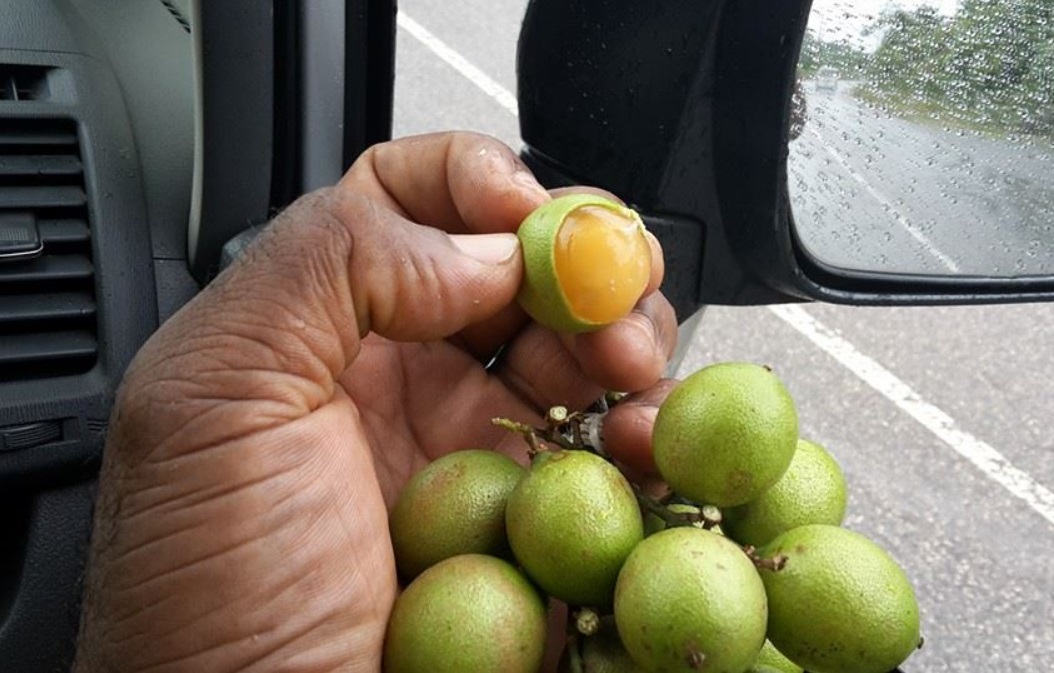Subscribe for all my updates and don't miss a thing! Sign me up!
What Is Jamaican Guinep Good For?
Is Guinep Healthy?
Sharing Is Caring! Share this awesome content with your friends now.
 What Is Jamaican Guinep Good For?
What Is Jamaican Guinep Good For?by Venesha Johnson | Associate Writer
My favourite fruit changes every season. Whatever fruit is in season, it is always my favourite. However, I must say, I can’t wait for guinep season to come back. This is one fruit I always feel I never get enough of while it's in season. The guinep season is usually around summertime, which is perfect!
New! Take a piece of Jamaica with you💃!
Savour the memories! Now you can get your authentic Jamaican souvenir items, as well as traditional Jamaican herbs, spices and housewares on our popular e-store. Click Here to learn more.
And, if you ever need a trustworthy and knowledgeable local guide, consider booking a private tour with us!
The Jamaican guinep (Melicoccus Bijugatus), is a small, sweet - sometimes sour fruit, and is among the fruits we have claimed as ours, although it did not originate here. It is often likened to lychee, but guinep has lime green skin and a jelly-like interior that ranges from orange-yellow to a slight pink. This is one fruit that everyone likes, and even if you haven’t tried it yet, I am sure you will.
Similar to the lychee in size and growing in bunches, the guinep’s thin, brittle skin must be cracked, typically by biting, to reveal the soft, edible flesh within. The flesh is usually thin, surrounding a large seed. It is predominantly sweet, occasionally accompanied by a tart or sour undertone. Guineps are usually sold by street vendors in bunches, and trust me, once you start eating them, it's difficult to stop until they are all finished.
While referred to as "Chinese Guineps" by some due to their similarity to lychees, they are known by various names in different countries, even within the Caribbean. In Trinidad & Tobago, they are called chenette; in The Bahamas, limoncillo, and in Barbados, ackee (not to be confused with Jamaica’s national fruit of the same name).
Types of Guineps:
Guineps come in various types, differentiated by factors such as skin texture, pulp colour and texture, fruit size and shape, and taste. Some have smooth, thick skin, while others have thin, coarse skin. The colour of the pulp ranges from light orange to a brighter orange, with firmer pulps generally being lighter in colour. Brighter orange pulp is softer and easier to remove from the seed with a few sucks.
Nutritional Value and Health Benefits:
Like most fruits, Guineps offer not only delightful taste but also a wide variety of health benefits. They are rich in essential nutrients such as amino and ascorbic acid, calcium, carbohydrates, fibre, iron, and riboflavin, among others. These properties contribute to various health benefits, including:
- Anaemia Prevention: Guineps are a significant source of iron, essential for the production of healthy red blood cells, thus preventing anaemia.
- Blood Pressure Regulation: Their antioxidant content helps combat free radicals, promoting healthy blood vessels and lowering blood pressure.
- Bone and Teeth Health: Guineps contain calcium, crucial for maintaining strong bones and teeth.
- Digestive Health: The fibre in guineps contributes to digestive health, aiding in cases of diarrhoea.
- Vision Health: Rich in vitamin A, guineps support vision health and prevent nyctalopia (difficulty seeing in low light).
- Immune System Boost: Phosphorus in guineps boosts the immune system and aids in cell repair.
- Mood Regulation: Guineps are used as a natural remedy for anxiety, stabilizing mood by affecting neurotransmitters.
- Sleep Aid: High levels of tryptophan promote restful sleep, essential for bodily repair and regeneration.
- Urinary Health: Vitamin A decreases urinary infections and bladder stone formation.
- Antiviral Properties: Guineps are used as a homoeopathic remedy for herpes simplex 1 due to their high lysine content.
- Weight Management: Low in calories and high in fibre, guineps help in weight management by inducing satiety.
Guineps also contain tryptophan, aiding in better sleep and mental health by facilitating the production of melatonin and serotonin. They also contain l-lysine, which may help prevent herpes outbreaks. Furthermore, proteins and amino acids in guineps are known to help lower blood sugar levels, preventing conditions like diabetes, while their iron content aids in the prevention of anaemia.
As a cautionary measure avoid eating the guinep seeds, as they may be toxic, even though more research is needed. Also guinep, because of its jelly-like texture can be slippery, so avoid giving whole guineps to young children as it may lead to choking.
So there you have it, another Jamaican fruit that you must try! Which reminds me, have you read our ebook, 101 Jamaican Health and Wellness Secrets yet? Get yourself a copy, we go into detail about some amazing Jamaican health and medical secrets that may quite frankly, change your whole life.
Sharing IS Caring! Please help me get the message out by sharing this article with your friends on social media (links below). Thnx ;-)
If you found this page useful, please consider subscribing to my weekly newsletter, to get even more.
It tells you each week about the new information that I have added, including new developments and great stories from lovers of Jamaica!
Return to Jamaican Black Sapote from What Is Jamaican Guinep Good For?
Return to My Island Jamaica Homepage from What Is Jamaican Good For?
References & Sources For What Is Jamaican Guinep Good For?
- 11 reasons why you should eat guineps (2023) Jamaicans and Jamaica - Jamaicans.com. Available at: https://jamaicans.com/11-reasons-why-you-should-eat-guineps/ (Accessed: 18 March 2024).
- Campbell, J.L. (2018) Guinep: A wonder of nature, Jamaicans and Jamaica - Jamaicans.com. Available at: https://jamaicans.com/guinep-wonder-nature/ (Accessed: 18 March 2024).
- Recipes, J.F. and (2020) Jamaican guinep fruit |, Jamaican Foods and Recipes - Authentic Jamaican Recipes and Foods. Available at: https://jamaicanfoodsandrecipes.com/jamaican-guinep-fruit/ (Accessed: 18 March 2024).
New! Get My Latest Book👇🏿
|
You asked, I've answered! You no longer need to save for months or years, to enjoy paradise! I spilled the beans! sharing my top tips on finding cozy accommodations and secret gems, only the way a native could! Click Here to pick it up on my e-store and start saving now! |
See The Best Of Jamaica - In Videos!
|
My channel reaches over 140,000 subscribers worldwide and has leveraged over 11 million views, sharing, what I call 'The Real Jamaica'. Subscribe today and join our family of viewers. |
Read More ...
New! Experience The REAL Jamaica!
Book Your Private Tour here and experience Jamaica the way we (locals) do!
P.S. Didn't find what you were looking for?
Still need help?
Click Here to try our dependable and effective Site Search tool. It works!
Or, simply click here and here, to browse my library of over 500 questions and answers! Chances are someone already asked (and got an answer to) your question.










New! Comments
Have your say about what you just read! Leave me a comment in the box below.